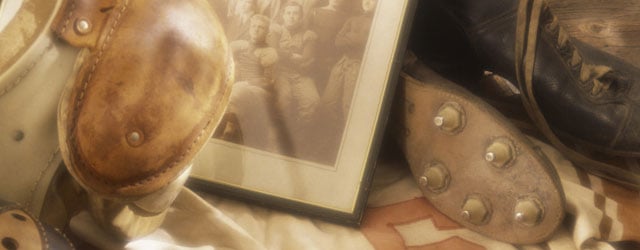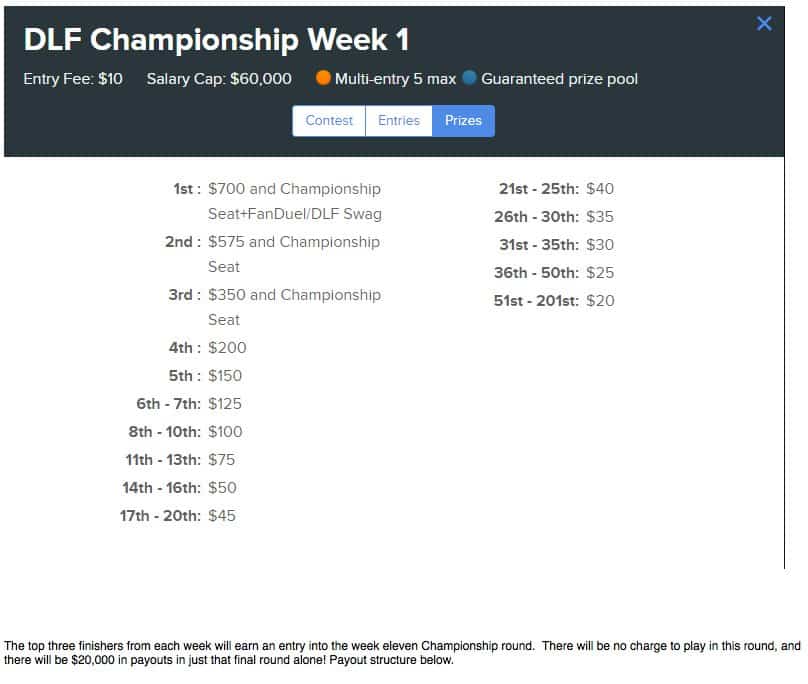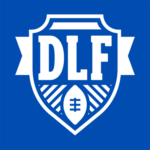Common Dynasty Mistakes

I love the dynasty format. In fact, outside of one very casual league with co-workers, it is the only form of fantasy football I currently participate in. While I am far from being one of the pioneers of this wonderful activity, I like to think I’ve been around long enough to have a pretty good handle on how things work. I don’t really believe anyone can be a fantasy expert, but I do feel like I’ve developed a pretty good handle on how things work.
Over the years, I’ve definitely made some mistakes. I’ve made good trades and bad trades. I’ve made far too many start/sit mistakes to even name. I’ve given up on some players far too early and others much, much too late. We all make those mistakes and will continue to make them. However, there are six common mistakes I see novice and veteran dynasty owners make time and time again which just make me shake my head. Not all of these are make or break decisions for your team, but I do think they all can have major impacts on your roster or the experience you have in your league.
Here’s the list in no particular order.
Mistake #1: Not adjusting your rankings/values to suit the league rules.
We tend to get really wrapped up in rankings, whether they are on a web site or our own. This is, of course, because they are pretty important. After all, they are how we evaluate trade offers, what we use to draft and what we use to evaluate value. The problem I see time and time again is people forget the rankings are very, very fluid. For example, if you are in a league where all touchdowns are six points instead of the more traditional four for a passing touchdown and six for all others, it changes a lot of things. Obviously it makes the quarterbacks a lot more valuable, but it also changes values quite a bit inside the quarterback ranks themselves. For example, the higher point total for touchdowns would move quarterbacks on high scoring offenses up a bit. Tony Romo is the perfect example of a quarterback who did better in a league with more points for a touchdown than most of his peers. It also impacts how we view rushing quarterbacks – Russell Wilson’s six rushing touchdowns are now just as good as if he had thrown the ball into the end zone, potentially lowering his value just a bit.
[inlinead]Another huge example is the level of PPR in your league. Some leagues differentiate by position while others just have a flat value. What that value is will obviously impact the rankings. If you only get 0.5 PPR or it isn’t a PPR league, it is going to drop someone like Julian Edelman way down my rankings. Likewise if running backs only get 0.5 PPR while other positions get more, it might make me think twice about someone like Matt Forte when compared to a different league.
Knowing your league’s scoring and rules is paramount when evaluating the value a player holds. It is even truer in IDP leagues because there is so much variety on that side of the ball. Be certain you know the rules of your league before drafting and keep them in mind when making trades.
Mistake #2: Using absolutes or not giving any feedback in trade discussions.
This is a little more stylistic than a lot of the other mistakes, but that doesn’t make it any less important in my eyes. Not giving any feedback is pretty self-explanatory. It is just clicking the reject button or even worse, just ignoring a trade offer sent your way. Without any commentary, it is basically slamming the door shut. You are highly unlikely to get any count of counter offer because the other owner doesn’t know what the problem was in the first place. Did you not like the player who was offered? Are you looking for a different position? Did you like the player but need just a little bit more? The other owner has no idea what you didn’t like, so it leaves them nowhere to go. To make matters even worse, doing this several times is likely to make the other owner just ignore you altogether when sending trades. In a league with a limited number of teams, you can’t afford to burn any bridges. Take 30 seconds and either send a counter offer or just send a quick message with the rejection. I’m sure we can all find 30 seconds to spare and it goes a long, long way towards getting trades done.
Avoiding using absolutes is a little more abstract but equally important. There has been more than one occasion where I’ll send a trade offer and the response I get is “He isn’t for sale.” Stop and think about that statement for a moment. You are basically telling me no matter what I do, you wouldn’t trade that player. If I offered Julio Jones and Andrew Luck for him, you would still say no? We all know that isn’t the case. Everyone has a price no matter who they are. Instead of using an absolute and saying he isn’t for sale, give a bit of a ballpark. Say something along the lines of “I value him as a top ten receiver.” You never know, maybe I value him as a top five receiver and might be willing to pay that price. If I’m not willing, at least the communication lines are open and I will be more willing in the future to start the conversation about that player or someone else.
Mistake #3: Not knowing if you are really a contender in your league.
Out of all six of the mistakes, this one just might be the biggest and most deadly for your fantasy roster. I am of the belief that the worst thing you can be in a fantasy league is average. The goal of playing is to be successful. If your team is just average, your chances of making it to the championship are very slim. Things might fall your way just perfectly, but you need to be realistic about your chances. If you think you’re going to be middle of the road, it is time to do something. You either go all in to make a real run at the title or you go into rebuilding mode. Just make sure you only do the former if you have a real shot at it. Since we are all a little bias about our own rosters, it might be good to have a friend you trust take a look and give their opinion on where you rank. If it isn’t top three in the league, it is time to go for the rebuild option.
Now when I say rebuild, I don’t mean maintaining a respectable roster, going 7-6 and just missing the playoffs. When I say rebuild, I’m talking about going all out. Each year, there are only a handful of blue chip prospects. You are going to need a few of those if you are going to turn things around. Look at your roster and find those players who are at their peak and sell, sell, sell. I’m talking about someone like Jamaal Charles, Jordy Nelson (pre-injury) or Antonio Brown – players with great value but who are likely to be nearing the end in two or three seasons. Sell them for top prospects or some picks to help you turn things around. Keeping them is not only opening your roster up to declining value as they age, but it just might be enough to keep you in the middle of the pack, making you miss out on the best draft picks.
The moral of this story is this – decide if you are a realistic shot for the title or not and then fully commit to it. If you play it safe and sit in the middle, you’re probably going to be average forever.
Mistake #4: Always drinking the Kool-Aid on the hot player of the week.
[inlinead]Between Twitter, Rotoworld and all of the other sources out there, there are always a lot of trendy names which seem to come up. Over the last month there are players like Jarryd Hayne, Thomas Rawls, Gus Johnson, Terrelle Pryor, Zach Zenner and many others who have all had their time in the spotlight. Do you know one thing they all have in common? All of them are potential roster cuts for their team. Yes, they do have talent and one or two of them might turn into something, but they all could end up cut this year as well. Just because a player gets mentioned as standing out at camp or a local sports writer talks about how they stood out at practice doesn’t mean someone is suddenly a fantasy star.
Players like the five listed above are probably worth a speculative add or a late round rookie selection, but don’t forget that they need to prove themselves to their NFL team not to some random sports writer. Anyone can flash at the right now, but it takes something a little different to turn into a star. I’ve seen owners chase the hot names like it were a free bacon of the month club membership. In fact, in one of my leagues there is an owner who almost always puts in a claim or sends a trade offer on anyone who pops up on Rotoworld. I can predict his waiver claims and who he will send trade offers on by who shows up in the news. He throws away an awful lot of better prospects to get those hot names and as a result very rarely has late round picks or depth during the season.
I’m not saying to ignore the hype, I’m just trying to remind you to keep it all in perspective. Just because a name gets mentioned in training camp doesn’t mean they are going to be a star.
Mistake #5: Misuse of waiver wire funds in blind bidding leagues.
Minor little tangent before I get into this. I sincerely hope your league does some kind of blind bidding for free agent acquisitions. If your league is still doing some kind of first come first serve system all the time, you need to lobby to change that. Just because you neglect your job/family and have instant alerts coming to your phone 24/7 doesn’t mean you should get every notable free agent. It is the same reason startup auctions are superior to snake drafts. It allows everyone to place a value on a player and awards the player to the person who wanted them the most.
Okay, with that out of the way, let me talk about funds. I’m in a lot of blind bidding leagues and have been for several years. I have never, ever run out of funds and I’ve never seen another team actually hit zero either unless they spent their entire balance on an early season addition (which happened once). With a lot of the additions coming in at just a few dollars, people running out doesn’t seem to happen very often.
What do I suggest you do as a result?
Make sure you go get your guys. If you really like a player and want them on your roster, make sure it happens. If you expect someone to go for 10-15 percent of your blind bidding budget and you would be upset if you didn’t get them, spend 25 percent to make sure you get them. One of the worst feelings is when you bid $15 and a player you really wanted goes for $17, especially considering you’re probably going to end the season with $50 which gets wasted. Don’t be so cheap on the waiver wire. If you really like someone, go get them. Who knows, they could turn into the next Jimmy Graham. You typically can’t take the money with you, so spend it!
Note: This might seem like this conflicts a bit with number four, but they are talking about different players. In number four, I’m referencing the off-season hype machine. In number 5, I’m telling you to go get the players you really like because you’ve done your own homework. Very different players and strategy there.
Mistake #6: Making age the primary factor in your roster construction.
Yes, I know these are dynasty leagues and we get to keep a player forever but stop and think how much has changed just during the off-season. Think about how many injuries have occurred, how many players have changed teams, how many coaches are in new spots and how many schemes have switched. All of these things have a great impact on player values. Then to toss in the impact of rookies being drafted and things happen pretty quickly in the NFL. That’s just a few months! Think about how many changes there are in a few years!
With that in mind, how much difference is there between a 25-year old receiver and a 22-year old receiver? Yes, the 22-year old is three years younger, but how much should that factor into your draft and trade evaluations? Is there really a difference between someone who could be in the league for seven more years when compared to someone who could make it ten more years given all of the unknowns? In my opinion, it shouldn’t matter at all. Yes, there are players who are past their prime and those obviously carry a little different value, but some people take the age thing to extremes.
Take a look at one of your leagues for a moment. Chances are there is one team in your league which is almost exclusively made up of players who are in their middle or early 20s. There is a chance they could just be rebuilding, but a fair number of these teams are guys who put a little too much value on being young. They are the owners who routinely trade away “veterans” who are sometimes just in their fourth or fifth year in the league for rookies, second year players or draft picks. As a result, they always seem to be building for the future. These owners forget on of Herm Edwards more famous quotes, “You play to win the game!” Having the best prospects doesn’t do you any good, because it is production that wins you the money, not potential. If you are trying to compete, limit yourself to about one fourth or one third of your roster as prospects. Everyone else needs to be producing now.
That’s it for my short list. There are of course a lot of other things owners do which I feel have a negative impact on either their roster or their experience, but these are some of the biggest!
What mistakes do you see dynasty owners making over and over? Let us know in the comments section below!

- Final 2021 Pre-Draft Rookie Mock: Round Three - April 28, 2021
- Final 2021 Pre-Draft Rookie Mock: Round Two - April 26, 2021
- Final 2021 Pre-Draft Rookie Mock: Round One - April 25, 2021


































































